In the circuit shown in E, F, G, and H are cells of emf 2,1,3 and 1 V, respectively. The resistances 2Ω,1Ω,3Ωand1Ω are their respectivle internal resistances.
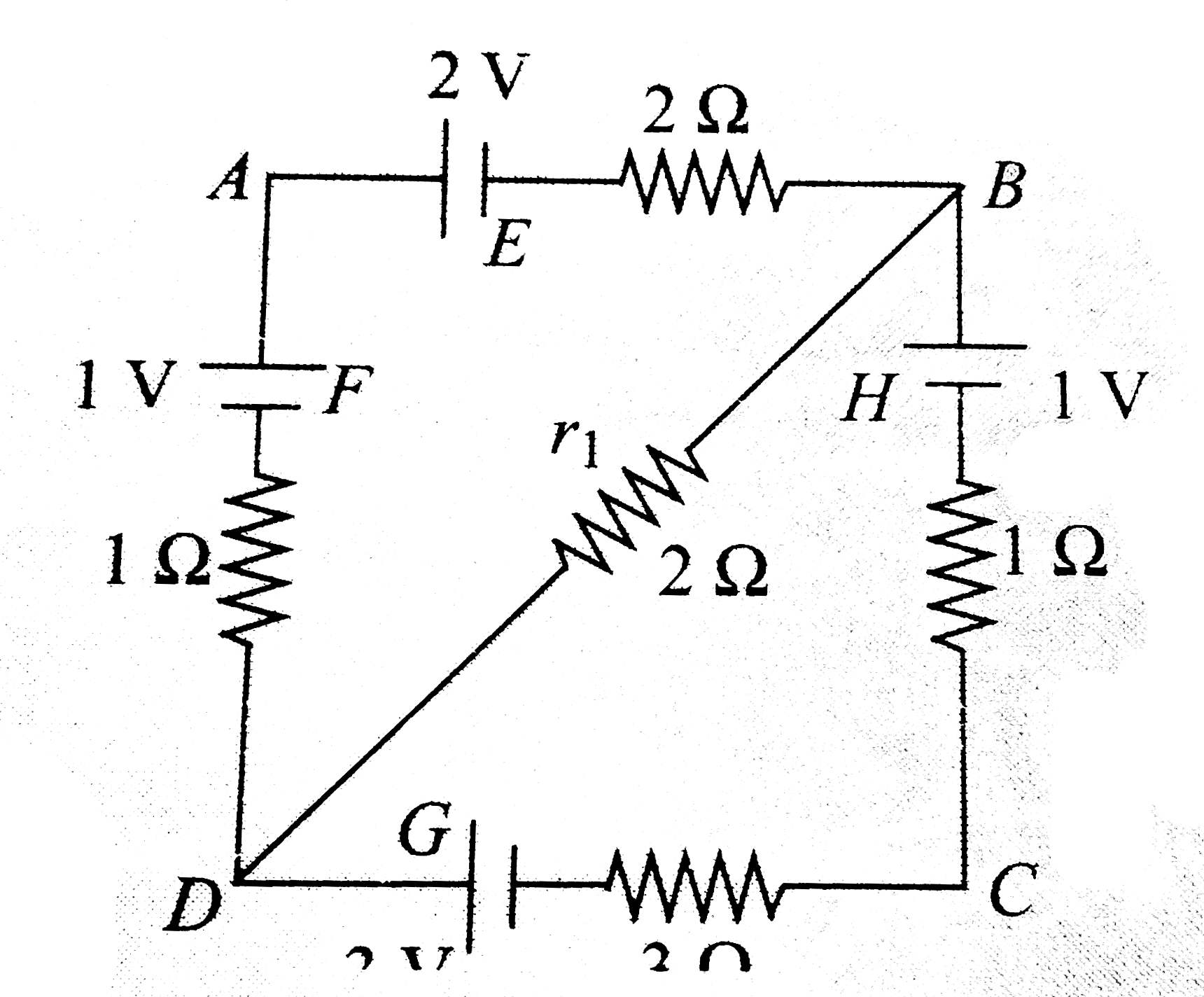
i. Find the potential difference between B and D.
(ii) Calculate the potential differences across the terminals of each of the cells G and H.
The circuit with the currents shown is redrawn in Applying the loop law to BADB, we get

−2i1+2−1−1i1−2(i1−i2)=0 or −5i1+2i2=−1(i)
Applying the same law to loop DCBD, we get
−3−3i2−3i2+1+(i1−i2)=0 or 2i1−6i2=2(ii)
From Eqs. (i) and (ii) we get
i1=112A,i2=−413A
∴i1−i2=513A
i. VD−VB=(2Ω)(513)A=1013V
ii. Potential differences across the cell G is
VD−VC=3+3i2=3+3(−4/13)=2713V
Potential difference across the cell H is
VB−VC=1−i2=1+4/13=17/13V.
⟨.V=E+ir)
Topper's Solved these Questions
- BOOK - CENGAGE PHYSICS ENGLISHCHAPTER - ELECTRIC CURRENT AND CIRCUITEXERCISE - Solved Examples12videos
ELECTRIC CURRENT AND CIRCUIT
- BOOK - CENGAGE PHYSICS ENGLISHCHAPTER - ELECTRIC CURRENT AND CIRCUITEXERCISE - Exercise 5.128videos
ELECTRIC CURRENT AND CIRCUIT
- BOOK - CENGAGE PHYSICS ENGLISHCHAPTER - ELECTRIC CURRENT & CIRCUITSEXERCISE - Kirchhoff s law and simple circuits15videos
ELECTRIC CURRENT & CIRCUITS
- BOOK - CENGAGE PHYSICS ENGLISHCHAPTER - ELECTRIC FLUX AND GAUSS LAWEXERCISE - MCQ s38videos
ELECTRIC FLUX AND GAUSS LAW
Similar Questions
In the circuit shown E,F,G and H are cells of emf 2V,1V,3V and 1V respectively and their internal resistance are 2Ω,1Ω,3Ω and 1Ω respectively.
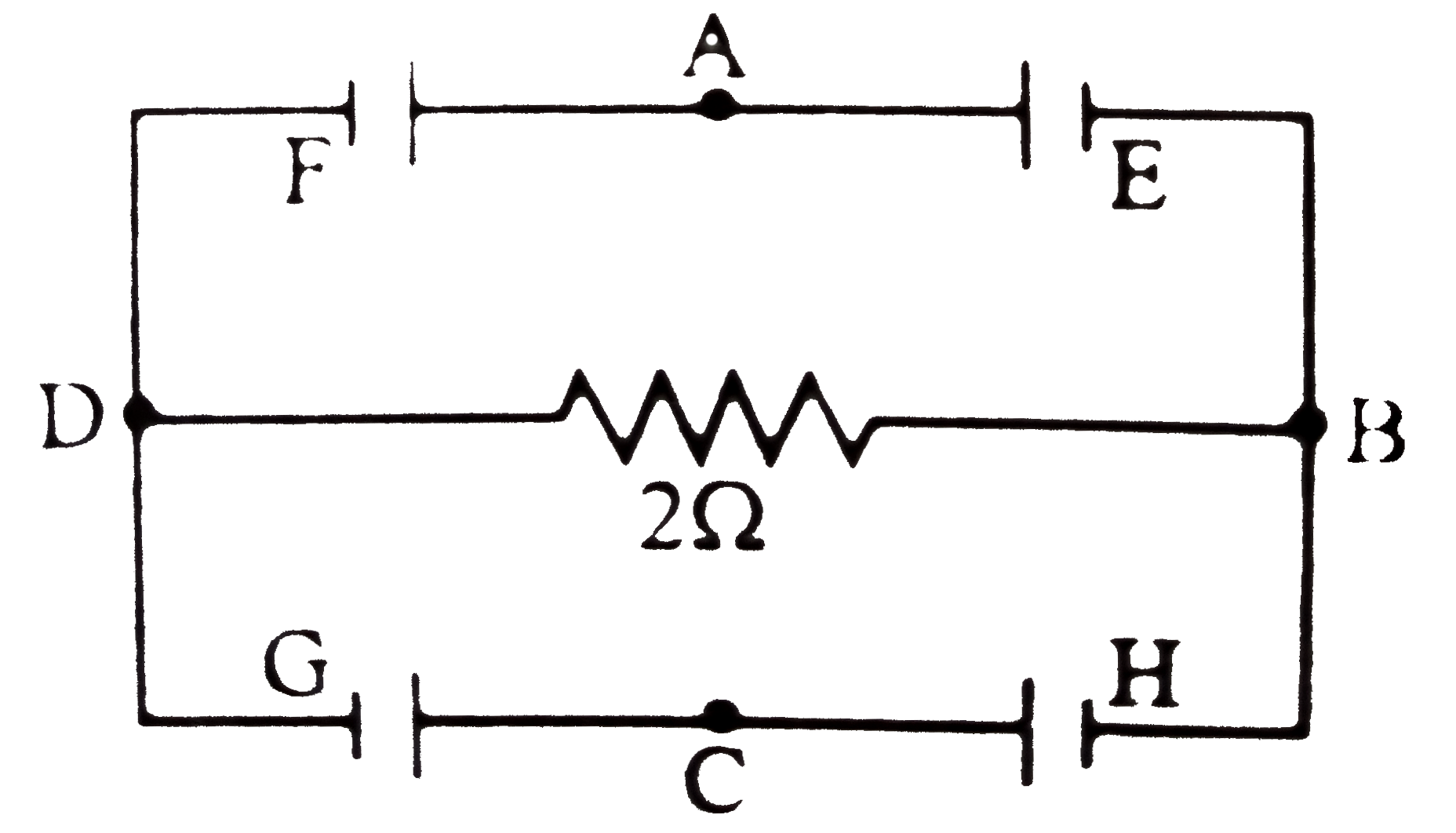 View Solution
View SolutionIn the circuit shown E,F,G and H are cells of emf 2V,1V,3V and 1V respectively and their internal resistance are 2Ω,1Ω,3Ω and 1Ω respectively.
 View Solution
View SolutionIn the circuit shown in figure
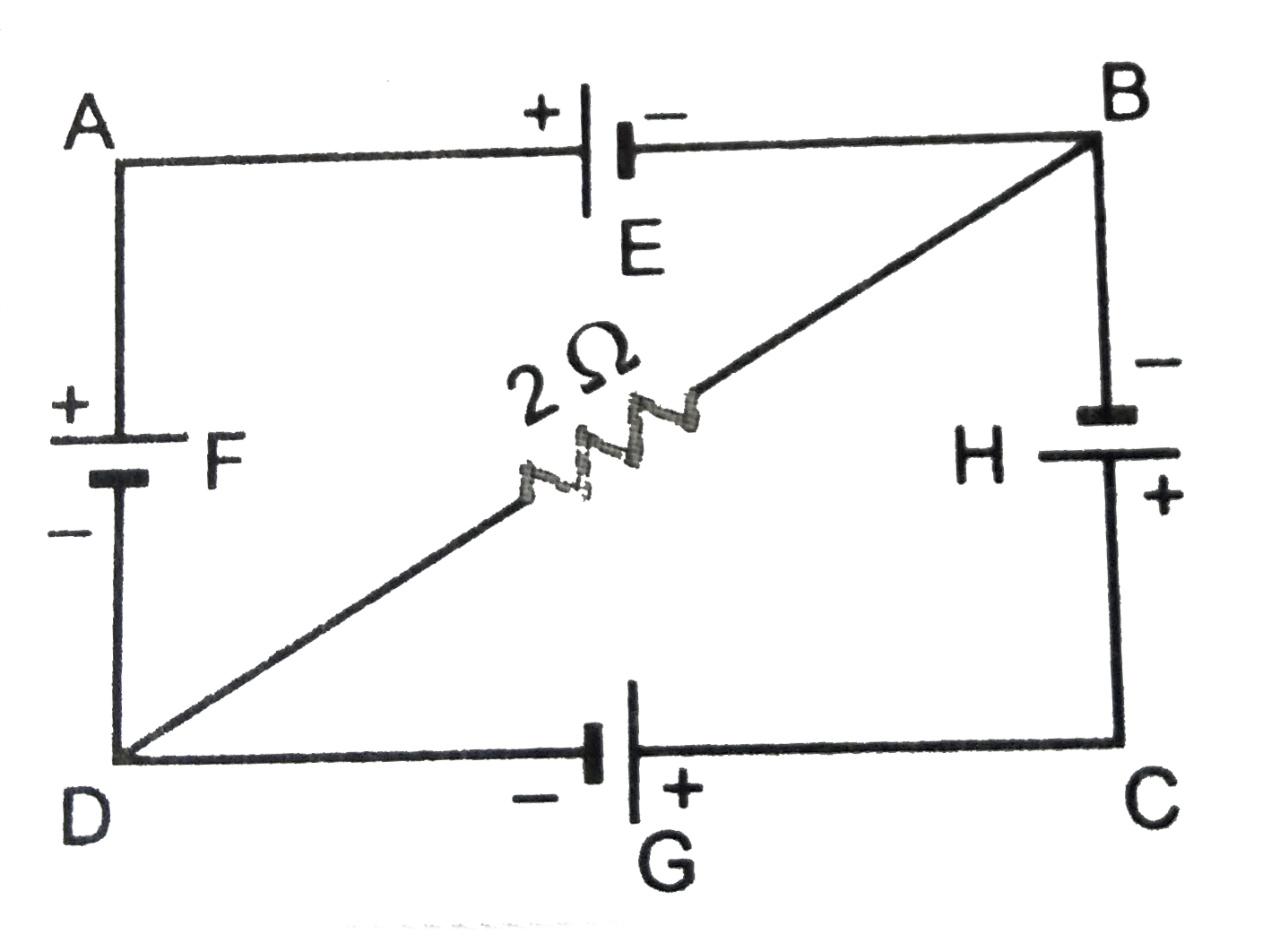
16, E, F, G and H are cells of emf 2V,1V,3Vand1V and their internal resistance are 2Ω,1Ω,3Ω and 1Ω respectively. Calculate (i) the potential differnce between B and D and (ii) the potential difference across the terminals of each of the cells G and H.View SolutionIn the circuit of figure, the current in 4Ω resistance is 1.2A , what is the potential difference between B and C?
 View Solution
View SolutionThe internal resistances of two cells shown are 0.1Ω and 0.3Ω. If R=0.2Ω, its potential difference across the cell
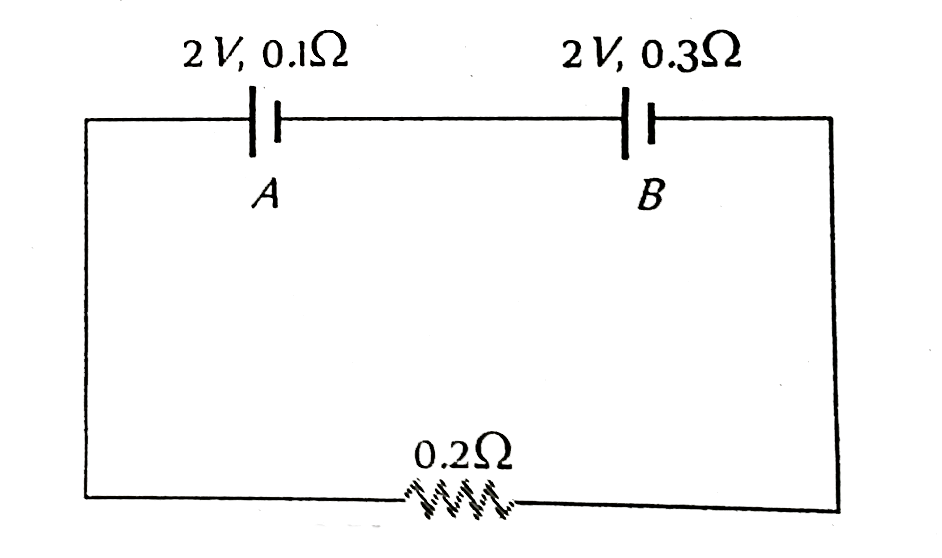 View Solution
View SolutionTwo non-ideal batteries have e.m.f 2V and 8V respective ly and internal resistance 1 Omega and 2 Omega respectively as shown in the figure. If the potential difference between a and b is zero then the resistance R has a value
_PHY_E01_014_Q01.png) View Solution
View SolutionA cell of emf E is connected across a resistance R. The potential difference between the terminals of the cell is found to be V. The internal resistance of the cell must be -
View SolutionIn the circuit shown in fig. the cell has emf 10V and internal resistance 1Ω
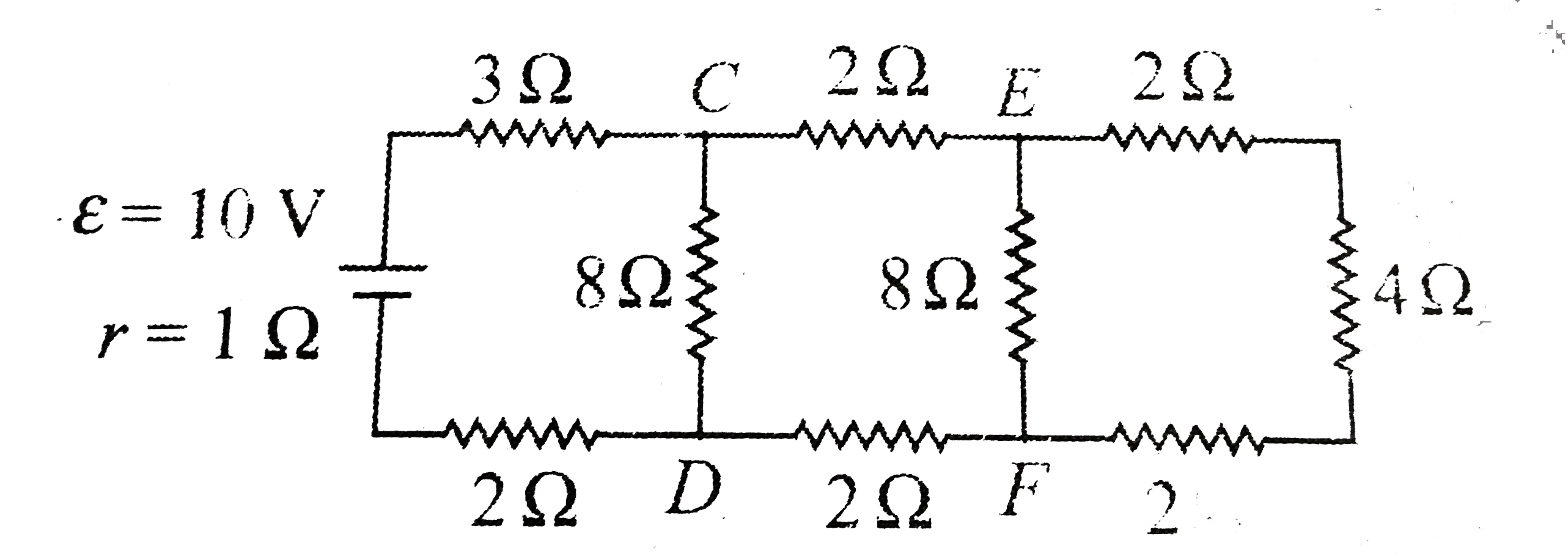 View Solution
View Solution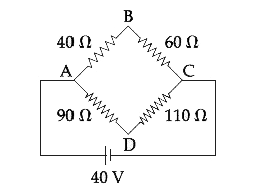
Four resistances 40Ω,60Ω,90Ω and 100Ω make the arms of a quadrilateral ABCD. Across AC is a battery of emf 40 V and internal resistance negligible. The potential difference across BD in V is ________.View SolutionThe circuit in Fig. shows two cells connected in opposition to each other. Cell E1 is of emf 6V and internal resistance 2Ω, the cell E2 is of emf 4V sand internal resistance 8ω. Find the potential difference between the points A and B.
 View Solution
View Solution

